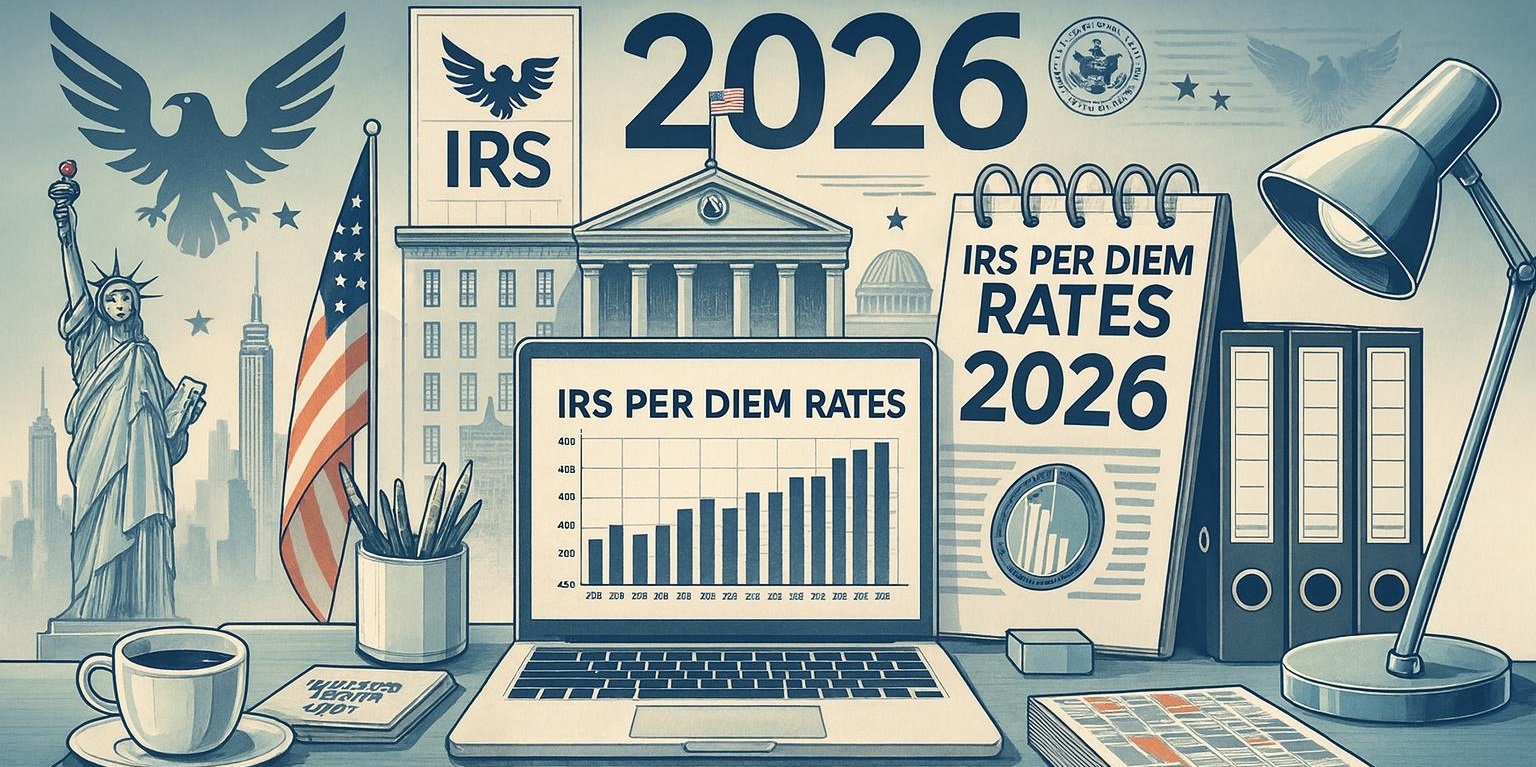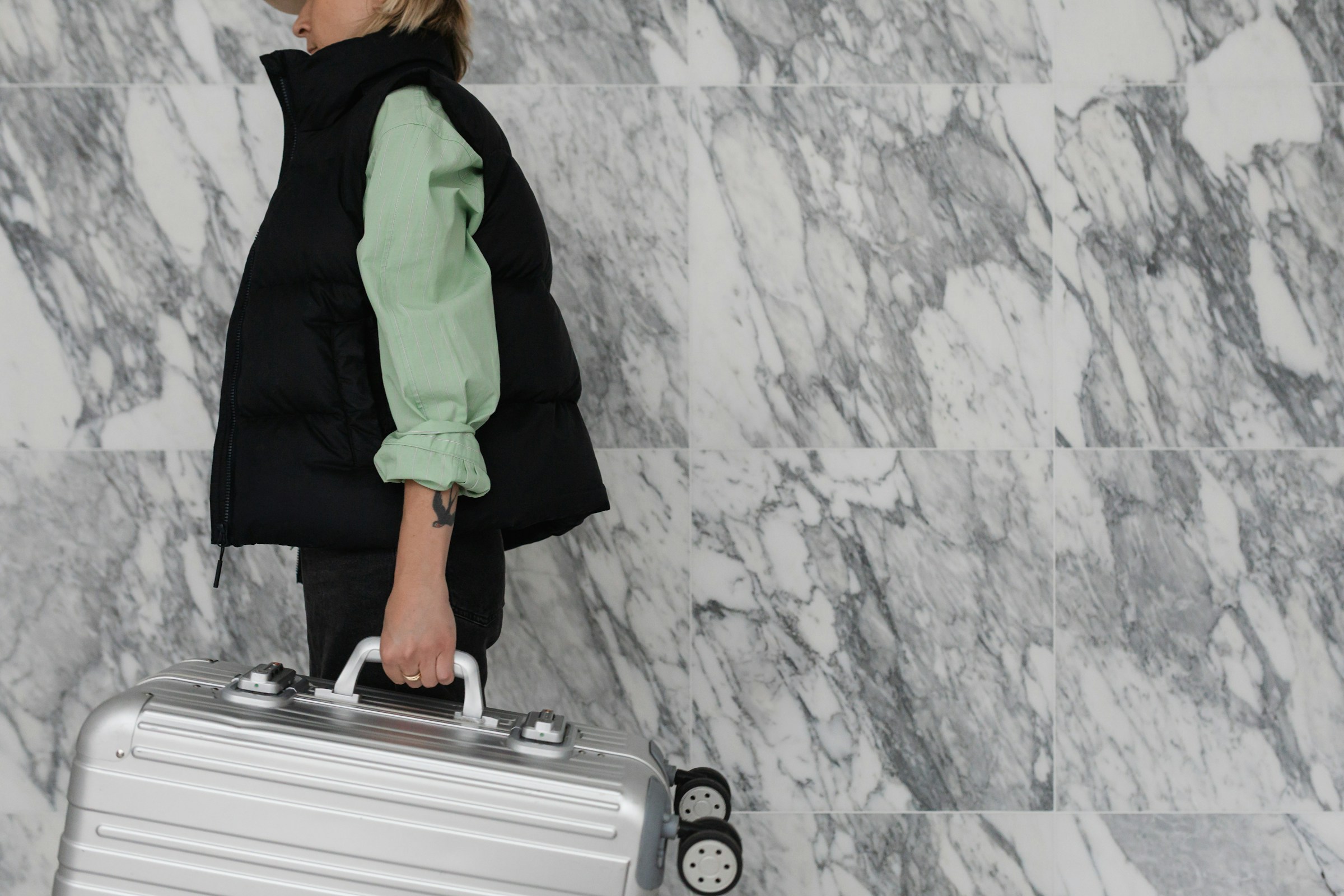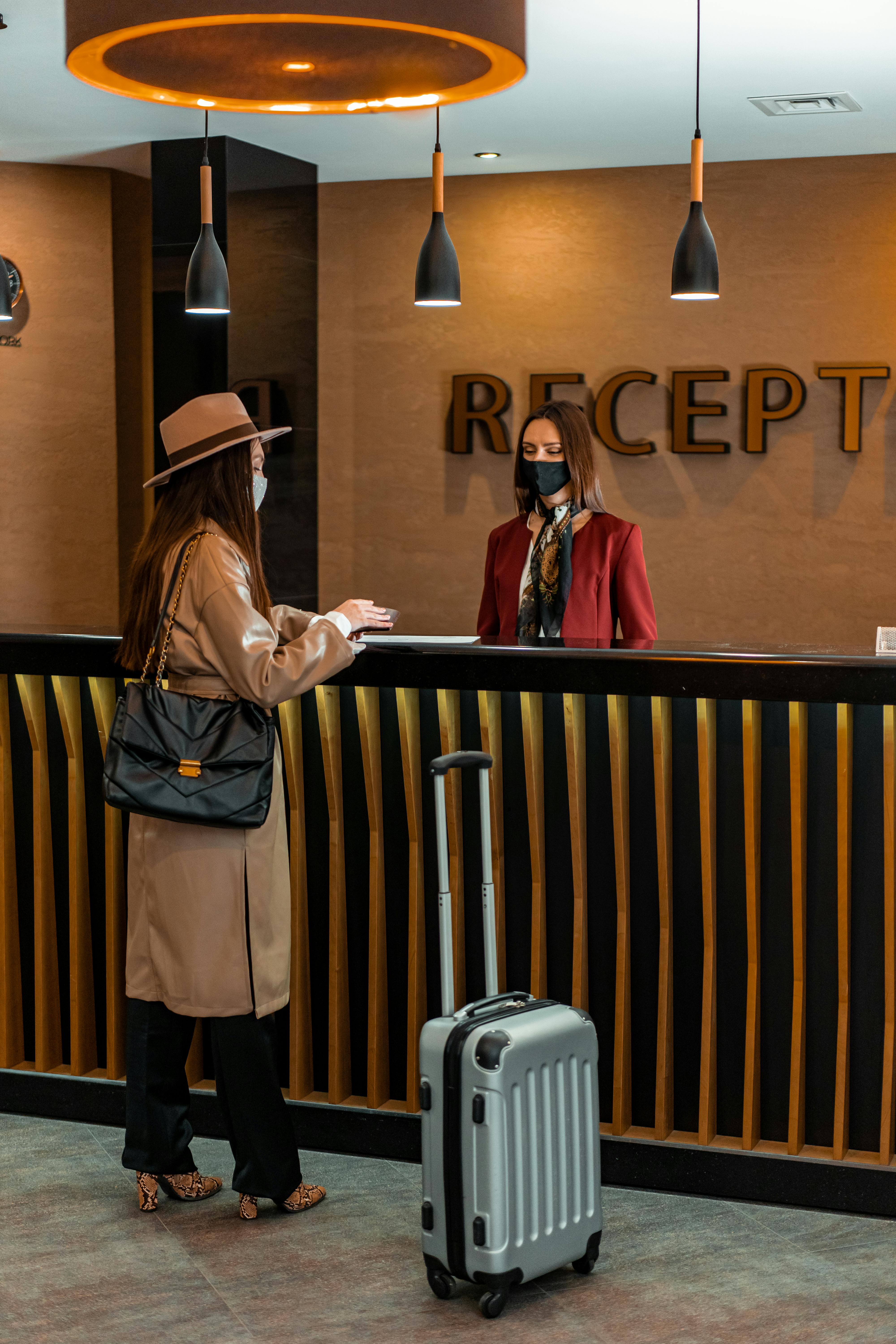Per Diem Rates by State: 2026 Travel Guide

Your team needs hotels, flights, and transportation. Your finance department needs receipts. The IRS needs proof. And you need all three to stop creating project headaches.
Per diem rates offer a solution by setting fixed daily limits for travel costs. Instead of chasing down every receipt, you pay standard rates and move on. But here's the problem: some states play by different rules, seasonal rates change faster than project timelines, and one mistake turns tax-free reimbursements into payroll nightmares.
This guide explains how per diem rates typically apply to travel and which states have their own unique policies to be aware of.
How Per Diem Works: Lodging vs. Meals and Incidentals
Travel reimbursements fall into two separate buckets: lodging and meals & incidental expenses (M&IE). Each bucket operates differently on your expense report, and understanding these rules prevents costly mistakes down the line.
Lodging
Hotels and other housing accommodations operate on an "actuals up to the cap" system. So, if your hotel costs $98, you get $98. When you hit the $110 federal limit with a $115 room, you eat the extra $5. This straightforward approach means you only need to track actual costs against the maximum allowable rate.
Meals and Incidentals
M&IE works as a flat daily allowance with no receipts required. For FY 2026, that's $68 per day under the standard CONUS rate for most of the country. However, your first and last travel days only qualify for 75% of the M&IE rate.
States That Follow the Federal GSA Standard
Most states and Washington, D.C. default to the federal standard set by the U.S. General Services Administration (GSA), which you can find using the rate lookup tool. For FY 2025, the baseline—called the CONUS standard—pays up to $110 daily for lodging and $68 for M&IE.
However, the GSA knows those numbers won't suffice everywhere, so it designates around 300 non-standard areas (NSAs) where costs are higher. Rates in these spots jump well above the baseline, especially during peak months.
GSA standards for 2026 will be the same as 2025, but the GSA reviews hotel market data every summer and publishes new rates each October for the fiscal year ahead. Make sure to keep an eye on this, as missing the update may cause you to reimburse the wrong amount.
States With Differing Per Diem Polices
While most states use the CONUS standard, a handful publish their own rules that'll bite you if you're not paying attention:
Choose the Correct Rate for Your Travelers
You don't have time to second-guess travel reimbursement calculations. Use this four-step verification process every time you book a trip:
- Confirm the city and dates: Rates change on October 1 each year, and some cities change by season, so lock in the exact calendar date.
- See if the state sets its own table: Some states or counties may have unique rates or policies, so make sure to check those out.
- If no state table, use the GSA rate: The lookup tool tells you whether you're in a pricey non-standard area or if the standard CONUS rate applies.
- Apply the 75% first/last-day rule for meals: GSA cuts the M&IE rate to three-quarters on travel days.
Tax and Compliance Considerations
Mess up travel reimbursement calculations, and the IRS treats the extra cash like wages—you pay payroll tax, the employee pays income tax. Keep payments inside the rules, and the money stays tax-free for everyone.
The IRS has three simple rules for tax-free travel allowances. They call it the accountable plan:
- The trip must be for work: You can’t plan a weekend getaway with some meetings thrown in. If your crew tacks personal days onto a work trip, called bleisure travel, only reimburse the business portion.
- Get receipts within 60 days: Your workers must file a simple expense report with dates, work location, and business purpose. A basic worksheet handles this requirement.
- Send back the extra: If you paid more than the federal rate, the worker returns the difference, or you take it from their next check.
If you go over the federal limits by even a dollar, the extra becomes taxable wages subject to FICA. This hits both sides:
- Business deductions shrink: You can deduct 100% of lodging and 50% of meals under the rules. Exceed the limit and you lose the deduction on the excess.
- Worker gets taxed: Extra allowances show up on their paycheck and get taxed like regular wages.
Simplify Crew Travel and Per-Diem Compliance With Engine
Most project-based companies drown in travel chaos—spreadsheets, lost receipts, and rigid bookings. You deserve a tool built for crews, not consultants. Engine handles the complexity for you. Book hotels, track allowances, and tie every charge to a job code —all in one platform.
Engine keeps crews moving with group booking so you lock in 15 rooms near the site in minutes, project-code tracking that sends each charge straight to the right cost center, unified invoices for one bill with no receipt hunt, flex protection that absorbs schedule changes instead of charging you for them, and 24/7 human support when weather, equipment, or airlines throw a wrench in your plans.
Ready to make work travel less work? Get started with Engine today.

Frequently Asked Questions
Can employees mix allowances and actual expense reimbursement on the same trip?
Yes, but pick one method per expense type and stick with it. Pay flat M&IE allowances but reimburse actual lodging costs (up to the cap)—that works. Just make sure your employee keeps hotel receipts and pays back any overage. Mixing reimbursement methods within the same expense category (e.g., combining per diem and actual expenses for lodging) without clear documentation or policy can cause audit issues. However, using flat M&IE with actual lodging is compliant when properly documented.
Are tips included in the M&IE rate, or can they be reimbursed separately?
Tips are already built into the GSA M&IE allowance. Don't pay them twice. If you reimburse tips on top of flat allowances, you push the total over federal limits, and that excess becomes taxable wages under accountable-plan rules.
Do lodging taxes count toward the cap?
No. GSA treats mandatory hotel taxes separately from the lodging ceiling. Reimburse the room rate up to the cap, then list taxes as a separate line item. Keep the invoice as proof, and you avoid overpayment problems.
How do you handle weekend or holiday travel for allowance purposes?
If your employee is still on assignment, pay allowances for every calendar day, including weekends and holidays. You only stop paying when they get home or switch to personal time. Check the seasonality notes to avoid missing mid-week rate changes.
What are the rules for partial-day M&IE reimbursement?
The IRS 75% rule applies to the first and last travel days, and you must pay three-quarters of the daily M&IE rate. So, a $68 allowance will drop to $51 on travel days.







.jpg)

























